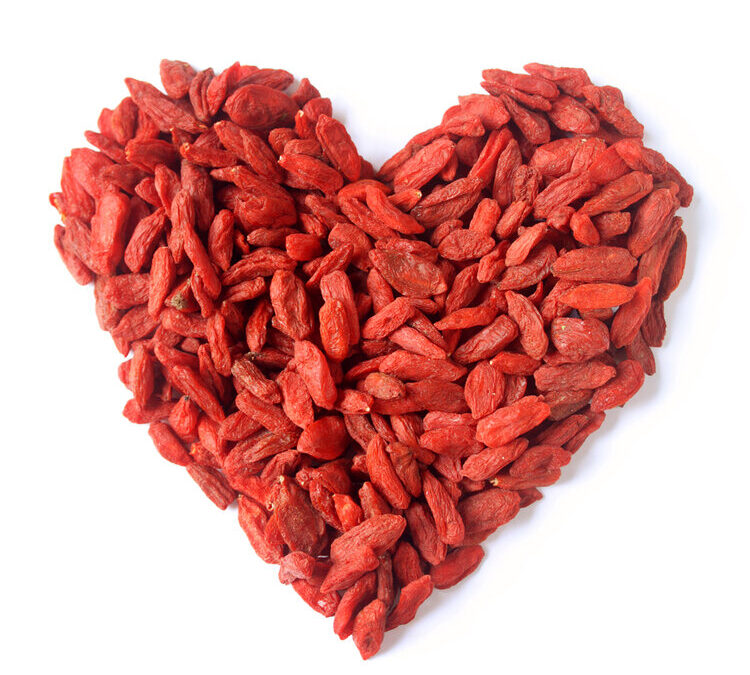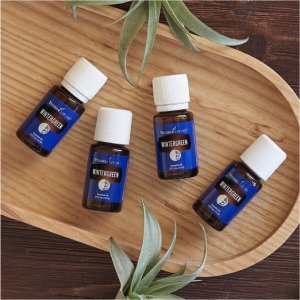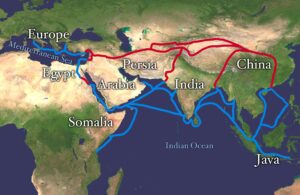
by Ed Slingerland | Oct 1, 2022 | Blog, frequently asked question, News, Newsletter
What does the phrase “Pure Therapeutic Grade” – used to describe some essential oils – mean?
The phrase doesn’t really mean that much… “Therapeutic Grade”, “Pure Therapeutic Grade”, “Certified Pure Therapeutic Grade”, “Clinical Grade”, “Pharmaceutical Grade” etc. do not actually say anything about the quality or purity of an essential oil.
These terms are simply marketing or trademark terms used by some companies. Sometimes the term is used to describe the company’s quality standards, but since the terms are not regulated by any third party or government agency, they are simply terms used by companies for marketing purposes.
By definition, all essential oils are “therapeutic.” This simply means that they have some effect on the body’s systems. As long as you buy 100% pure essential oils, you don’t have to worry about using an inferior product.
Well-respected companies like Young Living provide documentation in the form of GC/MS tests and also provide the country of origin, Latin (botanical) name and other information about chemotypes.

by Ed Slingerland | Sep 1, 2022 | Blog, frequently asked question, News, Newsletter
Is a Wolfberry the same thing as a Goji berry?
Qouqi, as the Chinese usually refer to the Wolfberry berry, was too difficult for most people to pronounce and was transmuted into Goji sometime in the 1970s.
The Goji and Wolfberry berry are both part of the Lycium berry family, and they both have the same red color and virtually the same taste as well. Is it getting confusing already?
The “common” Wolfberry grows in several regions in China, but the specific berry Young Living uses for its Ningxia products only grows in the mountains between China and Inner Mongolia – referred to as Ningxia – where the melt water from the mountain caps is so clear that it contains no pollution, guaranteeing quality.
D. Gary Young went to those remote hills of China over twenty years ago where he met Dr. Songqiao Chao. He introduced him to the bright red Goji berry. The locals found the berry not only delicious, but also useful because of its properties. Gary soon saw that those who consumed Goji berries benefited. He discovered that Chinese biochemists at the Ningxia Institute of Nutrition had analyzed the Goji berry and found that it was one of the most nutritious food sources in the world.
In Tibetan medicine, doctors use Wolfberry for its properties and often include it in formulas that include other botanicals and herbs. According to Tibetan medicine, Wolfberry has neutral and sweet energetic properties. Currently there is a very good study (1) that shows very well that Young Living’s Ningxia-Red can be a good supplement for almost anyone.
We do not diagnose or prescribe drugs or diets. Therefore, when in doubt, always contact your treating physician first.
(1): https://www.sciencedirect.com/science/article/pii/S2212958822000714

by Ed Slingerland | Aug 1, 2022 | Blog, frequently asked question, News, Newsletter
Why is an oil or product out of stock and often long-term not available for purchase?
Let’s talk about Wintergreen Oil for example.
We have talked before about how Young Living goes out of its way to test its essential oils. For fans of analytical chemistry, I have attached an article (1) published by scientists at the D. Gary Young Research Institute on the use of Isotope Ratio Mass Spectrometry (IRMS) to monitor methyl salicylate in wintergreen ( and Birch) essential oils.
Young Living tests up to 90 times (ninety) a batch of oil. At any time during that cycle that the standards, as are set forth in the Seed to Seal, are not met, the entire batch will no longer be used for Young Living oils or products.
Young Living no longer uses the tested material, but they sell it on the market to so-called “Brokers,” who resell the batch to other essential oil sellers or pharmacists, who can and do supply their products with lesser quality or reuse them as semi-finished products….
The cause of not reaching the standard values can be: not enough sun, too much sun, not enough rain, too much rain, not enough nutrition in the soil, too rich nutrient soil. And this is not to give a weird answer, but to indicate that growing/cultivating material listens very closely.
Furthermore, it sometimes happens that a harvest fails. Then there is simply no material, and therefore no oil! And no, Young Living does not buy oil from a source whose origin they do not know, so: out=out!
And lastly, Synthetic methyl salicylate: cheap and widely available, is often used to adulterate oils…. These are the oils you can buy for just a few euros on Marketplace, Ali-Express or even at Primark or Action.
And so that is what is going on right now with Wintergreen and Ortho Sport: there is simply not enough and good Wintergreen to guarantee customer quality.
(1) https://www.tandfonline.com/doi/full/10.1080/10412905.2021.1925362?cookieSet=1&fbclid=IwAR20c1uOZnNo8YSAnQmhexsQvZdUyZFhP7P_lKTF3ZoOigdbnJfmW62tbjc

by Ed Slingerland | Jun 1, 2022 | Blog, frequently asked question, News, Newsletter
Is it true that Copaiba oil enhances the effect or function, when used in combination with other oils?
To answer this question, you should know that Copaiba is distilled from the resin of the Copaifera tree, which grows in the northern part of South America, and mainly in Brazil. Oils distilled from trees include sesquiterpene, compounds with a higher molecular weight, which means they do not evaporate as quickly.
Other essential oils contain components such as monoterpene, with a lower molecular weight, which often evaporate ( vaporizing ) faster. So by mixing Copaiba or applying it on top of another oil, you ensure that the lighter constituents also have the opportunity to get into your skin, blood and cells.
The other piece of the myth is that there is also another sesquiterpene in Copaiba called beta caryophyllene. This compound (which is also found in CBD oil in lower amounts, by the way), can work very well with the CB2 receptors of the (mainly) immune cells in your body.
Conclusion: Copaiba does not enhance the functioning or the effect, because enhancing would mean that you turn an ordinary person into a superhero… When Copaiba is combined with another oil, you give that oil the chance to do its own work better, faster or more efficiently.

by Ed Slingerland | Apr 5, 2022 | Blog, frequently asked question, News, Newsletter
What are enzymes and what do they do?
Enzymes are crucial to the Digestion and Absorption of food and play a key part in promoting gut health. Undigested food causes true havoc in the body, causing a sprawl of yeast, fungi, parasites, bacteria and microorganisms, which are the start of illnesses and inflammation in the body. Enzymes are natural catalysts, made of proteins, that speed up chemical reactions and release the vitamins, minerals and amino acids in food.
Enzymes are very specific, and each type of enzyme will only ” breakdown” one type of “food.” Fats are broken down by an enzym called lipase, and this process takes place in the mouth. Lipase is found in your spit. Proteins are broken down by enzymes called protease (pepsin) and this process takes place in the stomach. Carbohydrates (also called starch) are broken down by enzymes called amylase and this process takes place in the small intestines. See below for an example of the process.
 Enzymes cannot work without co-factors, and each enzyme is designed to work with a particular co-factor. You’ve heard of these co-factors – they’re called “minerals.” Unless an enzyme is accompanied by its co-factor/mineral, or a substitute co-factor/mineral, it simply won’t do anything. There are eighteen co-factors/minerals in the human diet.
Enzymes cannot work without co-factors, and each enzyme is designed to work with a particular co-factor. You’ve heard of these co-factors – they’re called “minerals.” Unless an enzyme is accompanied by its co-factor/mineral, or a substitute co-factor/mineral, it simply won’t do anything. There are eighteen co-factors/minerals in the human diet.
Unfortunately, today’s modern diet often creates an imbalance of both minerals and enzymes. That’s why supplements are important: they can help us restore nutritional balance so we can get the most nutrients from our food. Young Living has 4 supportive enzymes, Essentialzymes-4, Essentialzyme, SulfurZyme, and Detoxzyme, plus a product specifically tailored to kids, Mightyzyme.

by Ed Slingerland | Mar 2, 2022 | Blog, frequently asked question, News, Newsletter
Where does the name THIEVES come from?

The story behind Thieves goes back many centuries in history. And more importantly, it is important to first understand that the use of essential oils and aromatics goes way back in ancient times….
… back to the time of the Middle Ages and trade along the Silk Road. Back to the time of the Romans, who in turn brought the oils from Egypt, where Cleopatra wielded the scepter and took care of herself with the help of all kinds of essential oils, and even centuries before that the Greek philosophers were already taking oils and knowledge from that same Egypt! But much further before that, the shaman (herbalist, priest, oracle, witch, sorcerer, or simply healer) used the juices of certain plants, trees, flowers, fruits, etc. as early as 2000 BC to treat tribal people who had physical or spirit-induced ailments. These people were held in very high esteem within their tribe, people or region.
How did Thieves get its name?

In the 14th and 15th centuries, the dreaded black plague killed citizens of all walks of life across Europe. The medical profession was powerless – they had no cure and no prevention. All people could do was stay as far away from plague victims as possible. The plague continued to make regular appearances until the 18th century.
Yet there was an intrepid gang of thieves who robbed the plague victims and their graves of all their jewelry and valuables. Incredibly, the thieves themselves never contracted the highly contagious disease. This was unheard of.
How did they do it? What protected them?
One day, as fate would have it, the brazen thieves were caught anyway. They received severe punishments for their crimes. Death by hanging! Public opinion, however, demanded to know their secret. However, if they were hanged, no one would ever find out!
So under enormous public pressure, the judge in question had to make a deal with the thieves. Would they really share their secret how they protected themselves from the plague in exchange for a less lenient sentence?
The thieves accepted the deal.
During the negotiations, it turns out that the robbers were not ordinary thieves. No, they were spice traders and perfumers who had traveled the Silk Road. Because of their knowledge of essential oils and spices, they learned exactly which oils to smear on their bodies to protect themselves from the germs of the plague. The court clerk on duty recorded their composition of the concoction during the trial and stored it in the court archives.
Of course, retrieving documents from the 15th century is no easy task, let alone court archives. D. Gary Young managed to unearth these important documents after an exhaustive search; and thus the contents were revealed.
Young Living’s Thieves® essential oil blend is based on this long lost recipe and named after the thieves who first used it. When using Thieves® oil, these ingredients synergistically combine the benefits of general wellness and the support of a healthy immune system.*
And while there are other companies trying to manufacture a product similar to Thieves®, no company may use the exact recipe and no other company consistently uses 100% therapeutic grade oils of the highest quality that is found in Thieves®.
* Due to different laws in various countries, e.g. not everywhere the Thieves® Waterless Hand Sanitizer may advertise “kills 99.99% of germs”.





 Enzymes cannot work without co-factors, and each enzyme is designed to work with a particular co-factor. You’ve heard of these co-factors – they’re called “minerals.” Unless an enzyme is accompanied by its co-factor/mineral, or a substitute co-factor/mineral, it simply won’t do anything. There are eighteen co-factors/minerals in the human diet.
Enzymes cannot work without co-factors, and each enzyme is designed to work with a particular co-factor. You’ve heard of these co-factors – they’re called “minerals.” Unless an enzyme is accompanied by its co-factor/mineral, or a substitute co-factor/mineral, it simply won’t do anything. There are eighteen co-factors/minerals in the human diet.


